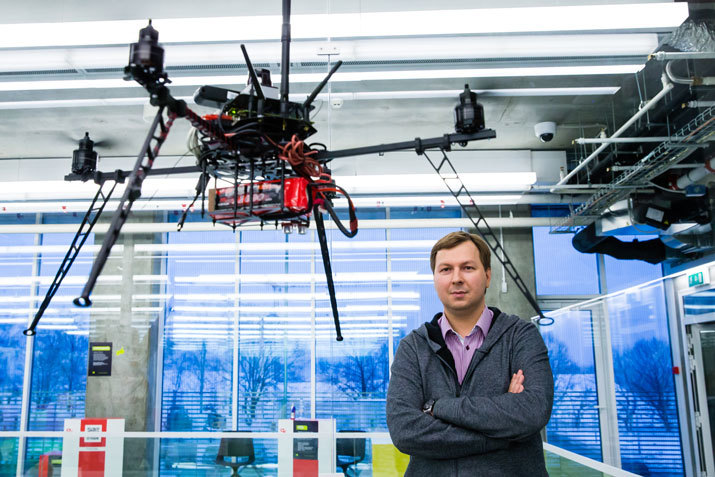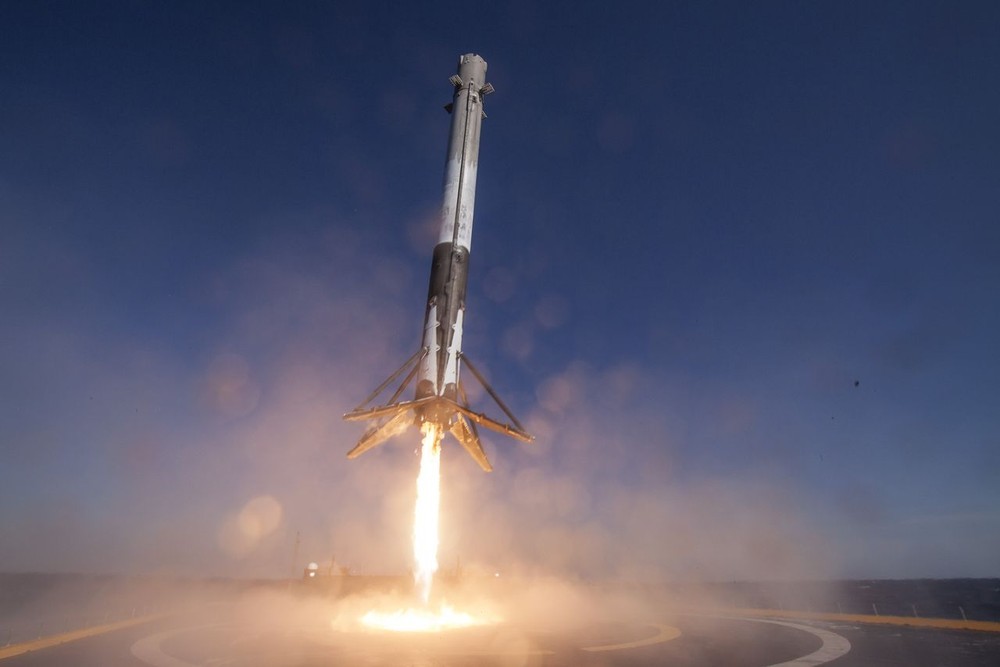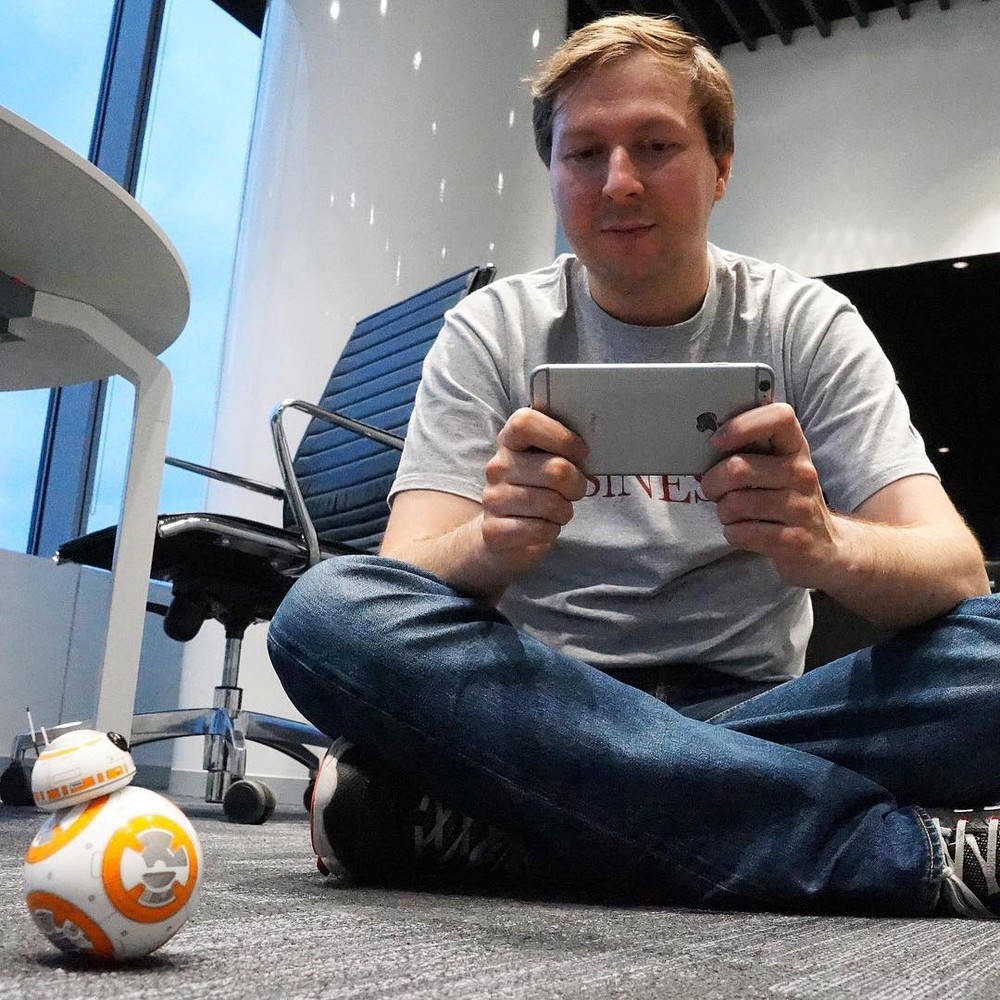A revolution that cannot be merged: why robotics can become our new astronautics

An article from the CEO of the Mail.Ru Group Dmitry Grishin.
In Soviet times, millions of people in the country dreamed of space. The astronauts were folk heroes. It was a dream by default: first of all, everyone wanted to be astronauts, to search for new planets and civilizations, and then options were possible further.
')
Yes, the Soviet space program required a gigantic amount of resources, and a planned economy made it possible. But besides that, she created a dream. And this dream became the fuel on which a magnificent engineering school was created. I will not even dwell on this, but it is clear that we have largely lost this dream and this school. Yes, many Russian engineers still receive high-quality fundamental education, but these are remnants of former luxury.
We have ceased to be a country of dreamers, we have become cynical and mundane.

Landing Falcon 9 Return Stage.
I often see in the social networks the ironic posts of Russians about SpaceX or Hyperloop, “well, we thought so” about the first launch from the East. We are not impressed with big ideas. Westerners - because "they are furious with fat", theirs - because "really there is nothing more to do." Even the popular meme about “Yura, I'm sorry, we are all ...” was born. We are looking for an instant "cash" in everything, but we are putting off unexpected approaches and bold thoughts, if only for biased analysis, rather steaming. A unique Russian phenomenon: we say “cosmonaut” as if it were something bad, by “cosmonaut” they began to denote a person divorced from reality. That is, astronauts no longer dream of being, they are afraid to pass for them. We choose the easiest, clear, visible “here and now” road, we stop any attacks outside the territory of the ordinary. Dreamers are not the place.
But they are waiting in Silicon Valley. Visiting there, immediately pay attention to the number of dreamers from around the world who have found themselves and implement their ideas. Even representatives of the American “old economy”, who have always been extremely cynical and dreamed only of growing financial indicators, create R & D divisions and invest in start-ups. It turns out that while we were throwing all the strength to get rid of illusions and stand with both feet on the ground, they learned to dream.
And nevertheless: right now there comes a moment when everything that we have missed, not only should, but also can come back. In order to get out of the vicious circle of the raw materials economy, Russia needs to return to dreamers their former status as heroes.

For a long time, the dreamers, who were engaged in the development of robots, automatically assigned the label "cosmonauts" in the very unique Russian sense of the word. Four years ago, when I created Grishin Robotics, many people twisted their fingers at their heads and predicted a quick failure. People have always had an understanding that startups that create something physical, using electronics, mechanisms, are very expensive. Robots seemed something unprofitable, relevant only in science fiction. But this period has come to an end.
The time has come when robo-startups become the same astronauts in the original sense of the role model. The Iron Revolution has changed the situation with robotics and continues to change it. Thanks to it, the threshold of entry into this sphere has already decreased markedly, and in the future it will become more and more accessible.
That is, dreamers get quick access to resources, and engineering science becomes the point of formation of a new reality.
Four major trends contribute to this.
The first is the falling cost of components and the availability of mass production: what was previously unavailable, began to cost a few cents. Not the last reason for this was the smartphone revolution (and in general the mass production of personal computers, laptops and the rest of consumer electronics). Many components that were previously expensive - cameras, displays, accelerometers - began to be actively used in the same smartphones. Due to the mass production of their prices have fallen, and availability has increased.
The second is the development of 3D printing. It greatly simplified prototyping. Previously, in order to assemble a working prototype, it was necessary to look for a factory that would agree to produce parts by microcirculation (and it was almost impossible to find one). Now you can buy a 3D printer and simply print the necessary details on it. And the finished prototype can already be shown to people, given the opportunity to play with it, touch it - and immediately get feedback to improve the product. The time interval between iterations was also reduced.
The third trend is crowdfunding. Startups have the opportunity to test their ideas for a wide audience, not just friends and neighbors. Now they can come to investors and show them the real results of their work and the demand for their product.
The next trend is the widespread spread of the Internet. This is important because most robots are connected to the Internet. You can upload fresh data from the network, you can delegate some of the calculations to the cloud, so as not to produce them directly in the device itself. Smartphones have become control centers and universal control panels for all sorts of robots. In addition, it became possible to delegate part of the tasks of the robot to a smartphone or tablet. The same telepresence robot Double Robotics uses the tablet as a “head”.

For robotics, the very ideal moment came when dreamers became visionaries.
All those fantastic things that caused a skeptical smirk, can now be created. We are on the verge of a robotic revolution. We are waiting for a boom of robots that solve real human problems in everyday life or humanity as a whole.
The source of the article.
Source: https://habr.com/ru/post/394873/
All Articles